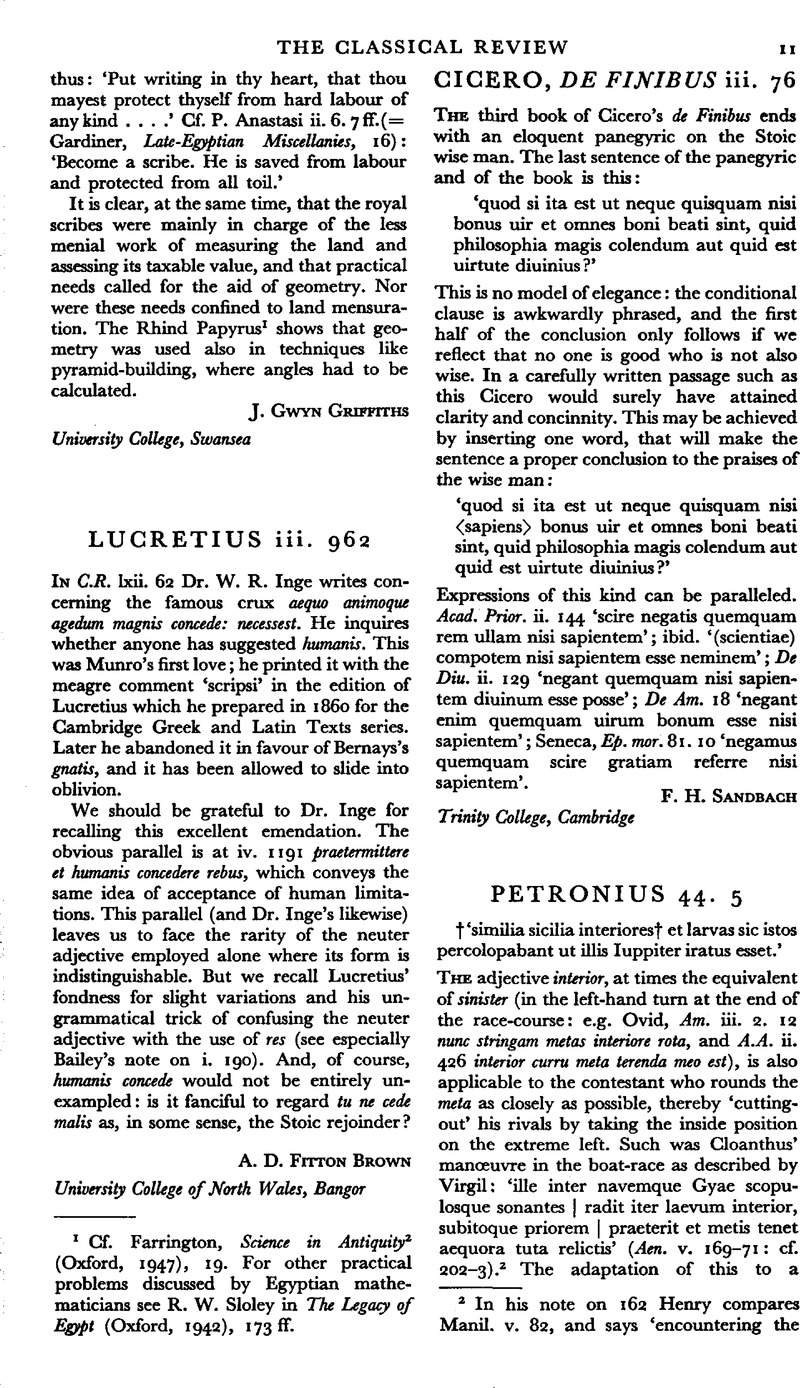No CrossRef data available.
Article contents
Petronius 44. 5
Published online by Cambridge University Press: 13 February 2009
Abstract

- Type
- Review Article
- Information
- Copyright
- Copyright © The Classical Association 1952
References
page 11 note 1 Cf. Farrington, , Science in Antiquity 2 (Oxford, 1947), 19Google Scholar. For other practical problems discussed by Egyptian mathematicians see Sloley, R. W. in The Legacy of Egypt (Oxford, 1942), 173 ff.Google Scholar
page 11 note 2 In his note on 162 Henry compares Manil. v. 82, and says ‘encountering the danger of collision with the goal itself in order to have the shortest way to go’.
page 12 note 1 In 168 Virgil says propiora tenentem (Cloantfutm). The explanation of this as propiora (Gyae) rather than (metae) is clearly wrong.
page 12 note 2 So also in xxiv. 34.10: 'propius subibant naves, quo interiores ictibus tormentorum essent'. But in this instance the bold approach proved useless, since they found themselves still within reach of a novel close-range weapon, the tolleno.
page 12 note 3 Such metaphors are not uncommon. Cf. Petron. 64. 3; also Ovid, F. vi. 585– (intus agere equos = to follow the shortest track in exposition), and the instances listed in Otto, A., Sprichwürter, p. 396, s.v. ‘ Spiele u. Feste ’.Google Scholar
page 12 note 4 For the sentiment, cf. C.I.L. iv. 3678 (Pompeii): ‘ M. Casellium et L. Albusium aed. o. v. f.: Statia et Petronia rog. tales cives in colonia in perpetuo.’
page 12 note 5 So Heraeus, W., Festschrift I. Vahlen, Berlin, 1900, p. 435Google Scholar (cf. Biicheler, Petron. Sat.6, 1922, Suppl. adnot., p. 284), but without explanation of interiores. A. H.Salonius (Comment, philol. in hon. I. A. Heikel, Helsingfors, 1926, pp. 135–6) suggested similia si cilia in terrore essent (with play on similia and similia).
page 12 note 6 The colaphus as a form of punishment was regarded ashighly degrading even among slaves (Sen. Dial. ii. 5. 1; cf. A. Maiuri, Cena, Naples, 1945, p. 165).




